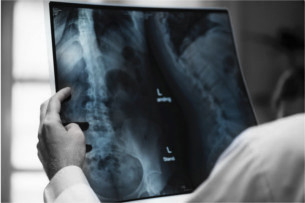Proving a Birth Injury Case
Cleveland birth injury attorneys understand how to present complex negligence claims to the courts
Birth injury cases are among the most difficult medical malpractice claims to prove in court. Medical malpractice claims are those which include allegations that a medical professional’s negligence has led to a patient’s injury. For example, amputating the wrong leg would certainly be a claim fit for a medical malpractice lawsuit. In birth injury cases, however, the link between a medical professional’s negligence and the harm caused to a baby is not always clear. Many parents assume that birth injuries were inevitable, or that the physical harm occurred in the womb, well before the labor process began. However, upon careful inspection of medical records and procedures with a skilled birth injury attorney, parents may discover that the injury could have been avoided entirely. The Cleveland birth injury attorneys at The Eisen Law Firm have handled such claims for decades, and are prepared to help you and your family protect your legal rights if your child suffered an injury at birth.
The elements of a medical malpractice case
There are four primary elements of a medical malpractice case. Each must be demonstrated for a medical malpractice claim to go forward in court. These are:
- A duty was owed to the patient
- A medical professional acted negligently, breaching this duty to the patient
- The negligence caused harm to the patient
- Damages were suffered as the result of the harm
If any element above is missing in a medical malpractice claim, a party will not prevail.
The duty to the patient
Typically, demonstrating that a duty was owed to a patient is one of the easiest elements to prove in a medical malpractice case. When parents enter the labor and delivery unit of a hospital, they sign various forms that demonstrate their consent to treatment. When the mother is admitted to the hospital and medical professionals begin administering care, they have a duty to provide reasonable care to the mother and baby. Even absent signed forms, any doctor or nurse who is involved in a patient’s care and treatment owes to the patient a duty of reasonable care. This even includes doctors, such as radiologists or pathologists, who never meet the patient.
The negligent act
Negligence is failing to act with reasonable care under the circumstances. Negligence may occur due to an act or an omission. Some common examples of negligence are failing to order appropriate tests, failing to consider all available data when making a diagnosis or developing a treatment plan, waiting too long to provide treatment, and administering the wrong medication.
Negligence is proven by expert witness testimony. For example, if a registered nurse committed a medical error, an expert witness with similar qualifications must testify on the relevant standard of care and how that standard of care was breached. The same goes for obstetricians, gynecologists, anesthesiologists, and other medical professionals. The expert doesn’t necessarily have to be of the very same specialty as the negligent doctor, but the expert must be able to show that he or she is familiar with the applicable standard of care.
Causation
It is not enough to show that a doctor provided care that was unreasonable under the circumstances. A victim of medical negligence must also prove that the negligence caused an injury. Sometimes a doctor will make a mistake – even a big mistake – but that mistake doesn’t end up causing injury. For example, suppose a doctor prescribes the wrong medication for a patient. The patient takes the medicine, which he did not need, but nothing bad happens as a result. There is no injury caused by the mistake (and no damages), so there is no basis for a lawsuit.
Causation can be particularly difficult in some cases. Take birth injury cases, for example. In such cases, it is often alleged that the baby suffered a brain injury because the obstetrical team failed to appreciate signs on electronic fetal monitor strips during labor that the baby was not getting enough oxygen. The defense in these cases often argues that earlier delivery would not have made any difference because the baby was probably injured even before the mother made it to the hospital. In other words, even if the doctor missed signs of injury and should have delivered the baby sooner, earlier delivery wouldn’t have made a difference. This is a “causation defense.”
Damages
Damages are the costs an individual endures due to a medical professional’s negligence. These damages may include medical bills, prescription bills, lost wages, loss of the ability to earn money in the future, pain, suffering, and mental aguish, loss of the enjoyment of life, and the cost of future medical care.
Damages are proven in a number of ways. Of course, bills are gathered and exchanged between parties to demonstrate the monetary losses that have already occurred. For pain and suffering, the cost of future medical care, and other types of damages that do not have concrete values, several witnesses may be required to provide testimony on the issue. Economists, accountants, life care planners, vocational experts, and therapists may testify as to how an injury may impact a family’s future.
Deadlines are in place to file birth injury cases, so contact our experienced Cleveland birth injury lawyers today
If your child was harmed by the negligence of a medical professional, do not delay in your pursuit of legal remedies. There are deadlines in place that limit how much time you have to file a claim. Our Cleveland birth injury attorneys review your case and consult with you at no charge. To set up your free consultation, call The Eisen Law Firm at 216-687-0900 or contact us online.




